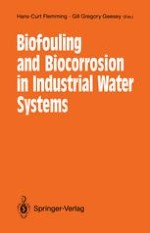Microbial growth and contamination ("Biofouling") in water systems represents a significant threat to the quality of waters produced for the microelectronic, pharmaceutical, petroleum, paper, food and other manufacturing industries. Biofouling can lead to biologically induced corrosion ("Biocorrosion"), which can cause severe damage to the equipment. Both biofouling and biocorrosion are frequently not recognized in time, underestimated, or linked with the wrong causes. The book represents a new approach by introducing biofilm properties and dynamics as basic principles of biofouling and biocorrosion, thus providing a better understanding and the means of fighting the undesired effects of biofilms. The most important features are: Case histories of biofouling in water treatment.- Detection and monitoring of biofouling.- Reverse osmosis membrane biofouling.- Biocide efficacy and biofouling control.- Plant design considerations for preventing biofouling.- Case histories of biocorrosion.- Detection, monitoring, control and prevention of biocorrosion.- Fundamentals of biofouling and biocorrosion mechanisms.
